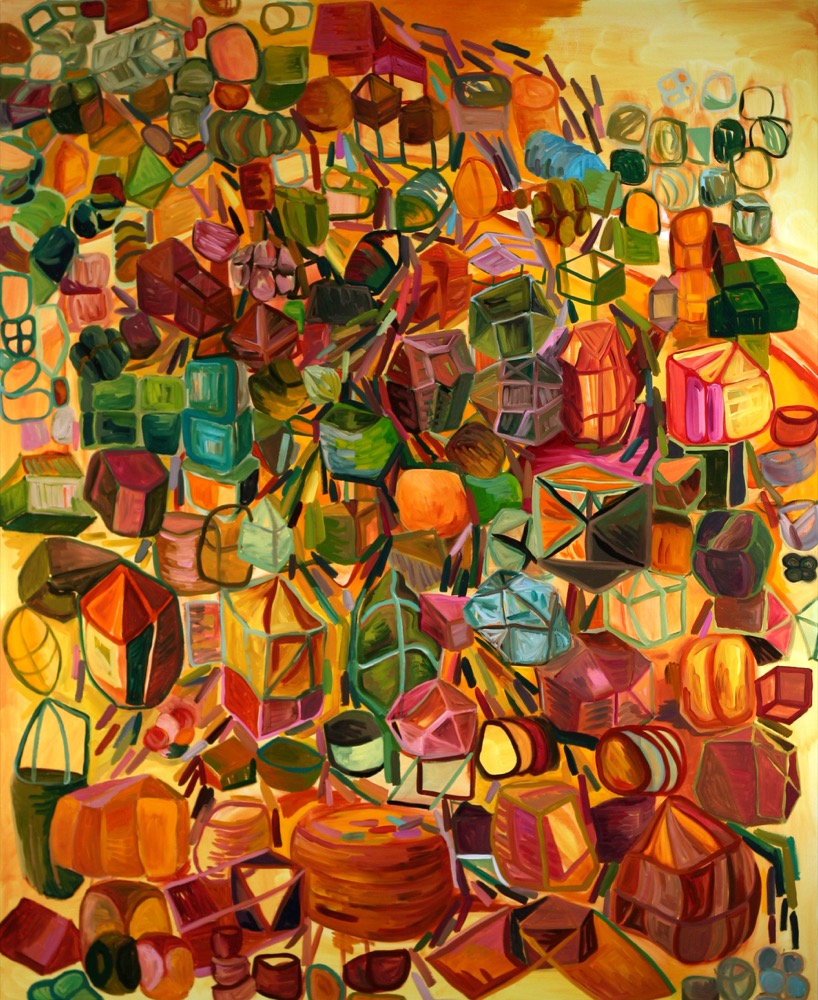Open gallery

My paintings address the consumer culture of the contemporary U.S. and other wealthy countries, and how the demand for ever-increasing production and consumption affects people, creatures, and land across the globe. The effects of production and consumption under global capitalism vary across locations and identity groups; this phenomenon is often referred to as environmental racism. Exposure to toxic waste and toxic byproducts is filtered through the power structures around race, class, and nationality. Consequently, working class, working poor, and poor people of color are at the greatest risk of toxic exposure, and depletion of land is most likely to happen in poorer nations that have been, and continue to be, preyed upon by colonizers and dominators.
As a middle class, white, U.S. American woman, I am immersed in the glamorous side of consumption; yet my context of plenty has made me privy to overwhelming accumulation and frequent and casual trashing of useful objects. Interested in exploring how the larger dynamics of inequity are manifest in everyday objects, I began engaging the issue in my work by painting objects in the context of middle class U.S. homes, and in their trash.
I gradually began to realize that I could examine consumer culture through an abstract vocabulary. My abstract paintings hint at accelerated production and consumption, and its appeals and dangers, through color, shape, texture, and repetition. These images are sensuous yet chaotic, and hence elicit conflicting sensations. Slick paint, playful forms, and vibrant colors paired with rich neutrals, offer a sense of delight, while crowded compositions and moments of harsh color juxtapositions are uncomfortable and unsettling.
Referencing the appeal of new commodities and the horror of discarded objects and toxic byproducts, my series of paintings reflects on the lived effects of our current inegalitarian structures of wealth, health, and power.















